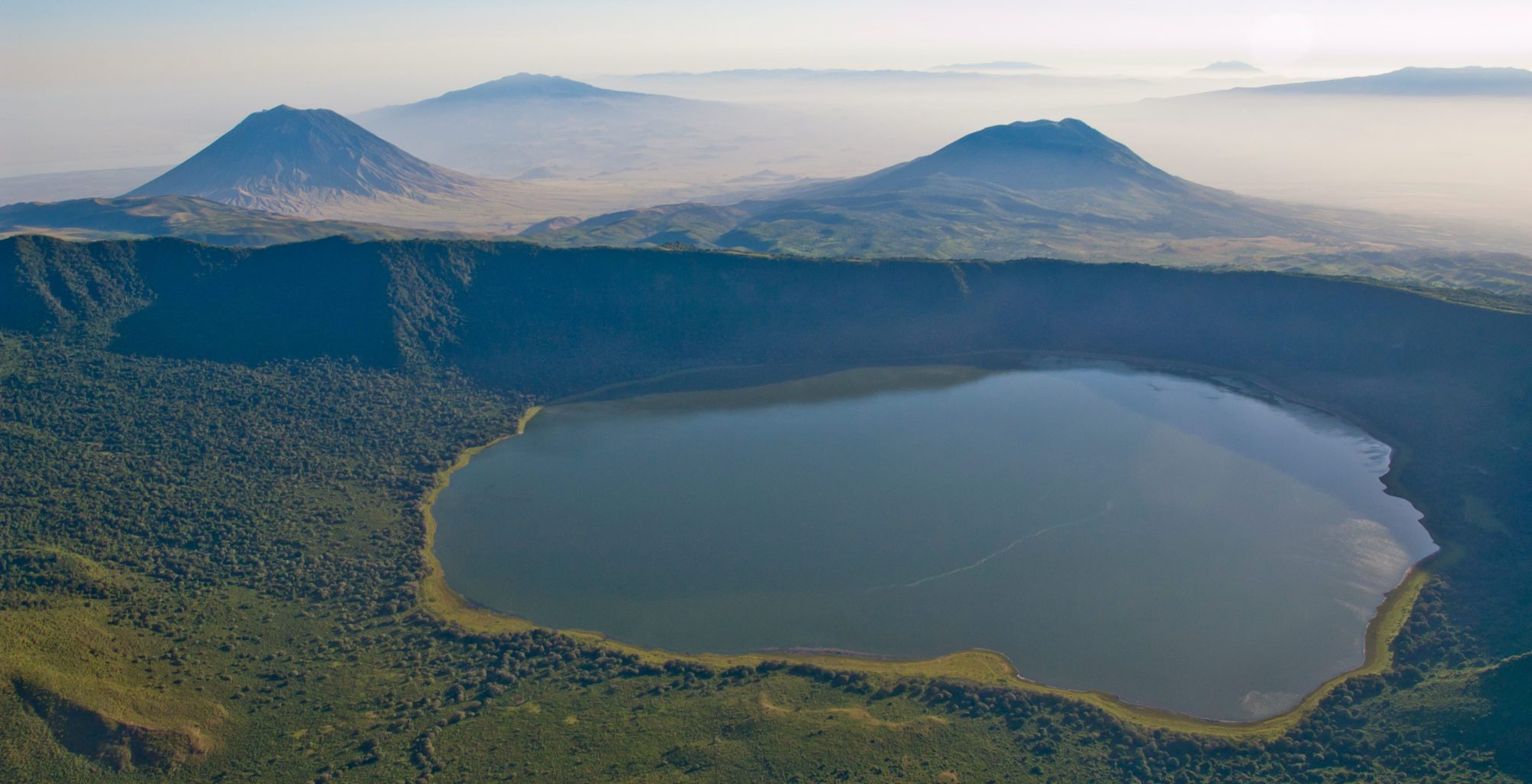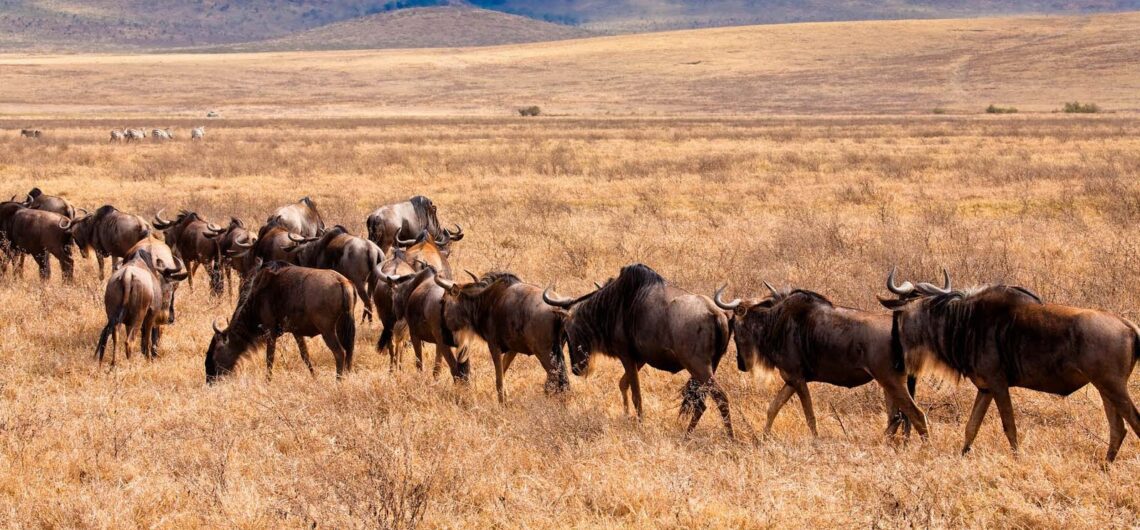The outstanding Ngorongoro Conservation Area is a UNESCO World Heritage Site located in northern Tanzania, known for its stunning landscapes, wildlife, and the famous Ngorongoro Crater.
The area was formed around 2-3 million years ago when a giant volcano collapsed, creating the caldera (crater) that is now the centerpiece of the conservation area. It covers an expansive area of around 8,292 square kilometers (3,202 square miles) and includes a range of ecosystems, from grasslands to forests, lakes, and the Ngorongoro Crater itself.
outstanding Ngorongoro Conservation Area
Access the outstanding Ngorongoro Conservation Area
Access Ngorongoro Conservation Area by Air: Many visitors arrive at Kilimanjaro International Airport or Arusha Airport and then take a domestic flight to Lake Manyara Airport or the Seronera Airstrip.
Access Ngorongoro Conservation Area by Road: It is also accessible by road from nearby towns like Arusha. A drive from Arusha to the Ngorongoro Conservation Area takes roughly 3-4 hours.
Attractions in Ngorongoro crater
Ngorongoro Crater:
One of the Attractions in Ngorongoro Conservation Area is the Ngorongoro crater.  This is a huge volcanic crater in Tanzania’s Ngorongoro Conservation Area, shaped like a bowl. It is home to diverse wildlife, including elephants, lions, and zebras. The crater’s walls create a natural enclosure, making it a haven for animals. Tourists visit for game drives, spotting animals against the stunning backdrop of the crater’s floor.
This is a huge volcanic crater in Tanzania’s Ngorongoro Conservation Area, shaped like a bowl. It is home to diverse wildlife, including elephants, lions, and zebras. The crater’s walls create a natural enclosure, making it a haven for animals. Tourists visit for game drives, spotting animals against the stunning backdrop of the crater’s floor.
It is an excellent place for birdwatching too, with various bird species flying around. The Maasai people also live nearby, adding cultural richness to the area. Due to its conservation efforts, the crater remains a protected area, preserving its natural beauty and wildlife. Visitors can enjoy breathtaking views and unforgettable encounters with Africa’s wildlife within this unique ecosystem.
Olduvai Gorge: Olduvai Gorge, found in Tanzania’s Ngorongoro Conservation Area, is a significant archaeological site. It is where ancient human fossils and tools were discovered, offering insights into human evolution. Scientists found bones and artifacts dating back millions of years, revealing how early humans lived and evolved. This gorge became famous due to the discoveries made by archaeologists Louis and Mary Leakey. Visitors can see exhibits and learn about human history at the nearby museum. It is a place where the past comes alive, helping us understand our origins and how humans developed over time.
Wildlife viewing is another attractions in Ngorongoro Conservation Area: In Ngorongoro Conservation Area, wildlife viewing is incredible. The area is home to lots of animals like lions, elephants, wildebeests, zebras, and even rhinos. Visitors can go on safari drives to see these animals up close in their natural habitat. The Ngorongoro Crater is especially famous for its diverse wildlife.
It is like a big natural bowl full of animals. There are guided tours available with knowledgeable guides who help spot different animals and share interesting facts. The best times to see wildlife are usually early mornings or late afternoons when animals are active. It is a fantastic chance to see the ‘Big Five’ (lions, elephants, buffaloes, leopards, and rhinos) and many more fascinating creatures in one place.
Cultural encounters: In the Ngorongoro Conservation Area, you can experience amazing cultural encounters with the Maasai people. These friendly locals live in the area and offer insights into their traditional way of life. Visitors can visit Maasai villages to learn about their customs, dances, and crafts. The Maasai are known for their vibrant clothing and distinctive jewelry made from beads.
They welcome guests warmly and often showcase their traditional jumping dance, called the “adumu.” Some villages also offer opportunities to participate in activities like spear throwing or learning how to make fire. It is a chance to understand their nomadic lifestyle and how they coexist with wildlife in this beautiful conservation area, sharing their traditions and stories with visitors.
Activities in Ngorongoro Conservation Area
Hiking activities in Ngorongoro Conservation Area : Hiking in the Ngorongoro Conservation Area offers stunning views and adventures. There are guided hikes available around the crater rim, providing panoramic vistas of the landscape and wildlife below. Some trails lead to waterfalls or viewpoints where you can spot animals. It is a chance to explore the area on foot, feeling the fresh air and enjoying the natural beauty. Guides share stories about the area’s history, plants, and animals, making the hike informative and exciting. Remember to bring comfortable shoes, water, and sunscreen for a fantastic hiking experience in this incredible conservation area.
Photography: In the Ngorongoro Conservation Area, photography is a treat. The stunning landscapes and diverse wildlife make it a paradise for photographers. You can capture amazing shots of animals in their natural habitat, like lions, elephants, and colorful birds. The crater’s unique shape and breathtaking views offer fantastic photo opportunities.
Whether on safari drives or hiking trails, there are plenty of chances to snap incredible photos. Morning and evening light can create magical scenes, so it is great to be ready with your camera at those times. Just remember to respect the animals and their space while capturing these memorable moments.
Game drive Activities in Ngorongoro Conservation Area
Game drives in the Ngorongoro Conservation Area are like exciting safaris. Visitors hop into safari vehicles with guides to explore the vast area. These drives offer close-up encounters with diverse wildlife, like lions, zebras, and elephants, roaming freely.
The guides know the best spots to find animals and share interesting facts along the way. Morning and late afternoon drives are prime times to see animals when they are most active. The crater’s unique landscape provides incredible backdrops for photos. It is an adventure-filled way to witness nature and spot the ‘Big Five’ animals in their natural habitat.
Tips:
- Permits: Entry into the Ngorongoro Conservation Area requires permits, which can be arranged through tour operators or at the entrance gates.
- Accommodation: There are various lodges and camps within and around the conservation area catering to different budgets, from luxury to more budget-friendly options.
- Best Time to Visit: The dry season (June to September) is often recommended for wildlife viewing as animals gather around water sources, but it can get crowded. The wet season (November to May) offers lush landscapes and fewer crowds, but some areas might become inaccessible due to rains.


Comments